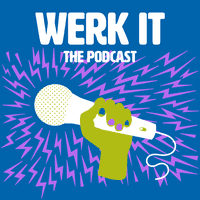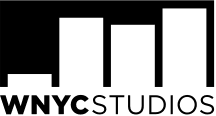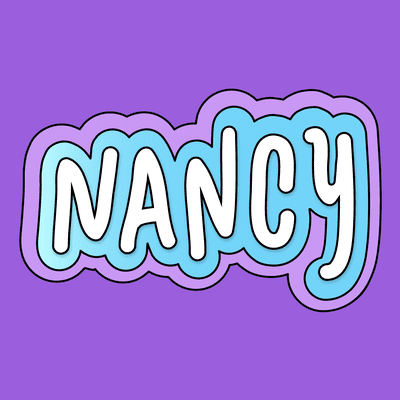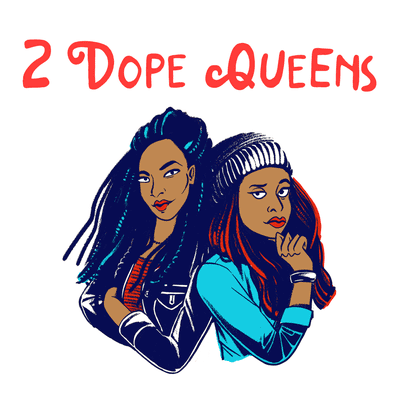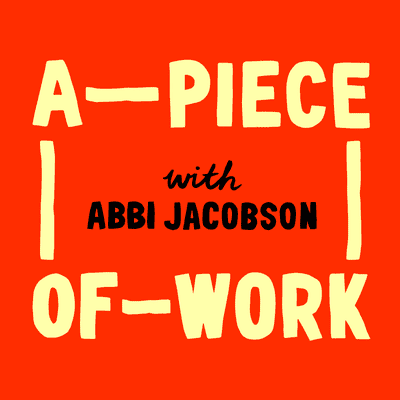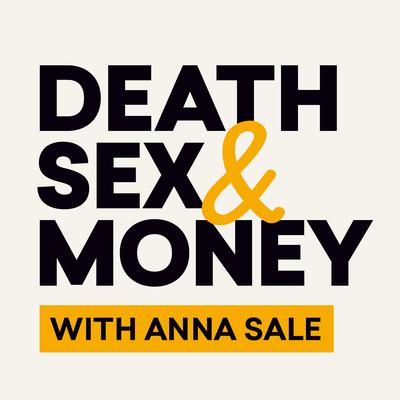You Can Grow Your Audience...Without Going Batsh*t Crazy
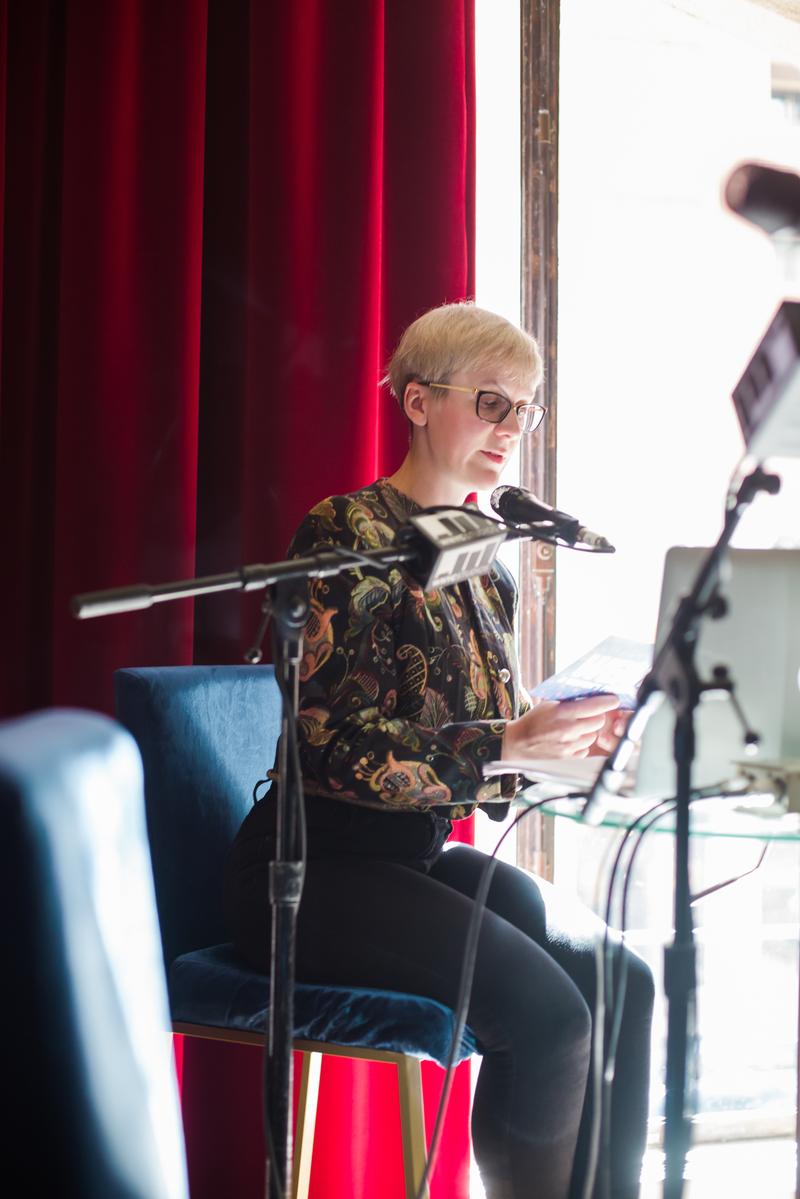
Don't try to do all of this. Um, you will go batshit crazy if you try to do everything that's on this slide and everything before. Do what makes sense for your show, your audience, your size, and your resource.
Dessa: In the ever-expanding podcast universe, finding and growing your audience can be tricky. There are just SO many tools you can use. Luckily, Mathilde Piard helps podcasts at NPR figure out how to do just that. She shares what she has learned about finding new ears that can help podcasts of any size.
I’m Dessa, the host of Werk It, the podcast -- a compilation of some of the best moments from the live event. This session was part of the Womxnifestos series. They’re moments of distilled wisdom presented by people with lived experience and real conviction.
Mathilde Piard: So my name is Mathilde Piard. I'm a senior project manager at NPR. That's a photo of me prior to last month. I've now gone blonde.
One of the things I've worked on a while at NPR, um, is helping launch new new shows. In the past five years we've launched 20 podcasts but in the past three years we've also tripled our audience. So everything I'm going to talk about today is stuff that we've learned from doing both of those things. Um, the vast majority of that has been done without real marketing budgets. Albeit, at NPR scale. I totally get it. So just be aware that like, I'm going to talk about a variety of things today and some of those things are things that like won't make sense for you to do.
Don't try to do all the things -- success looks different for different organizations of different sizes. So keep that in mind. But I'm trying to try to be as transparent as possible of like, if you can do this, great and if you can't, there's other things you can do. Don't sweat it.
Um, Oh, and then lastly, each of these different things I'm gonna talk about, each of these different categories, they can be a whole session in and of themselves. So think of this as like, this is like the taster menu. This is the table of contents for what you can do to grow your audience. Um, so we're going to be flying through it. So is everybody ready? All right, cool.
Um, uh, we know what we know because we've tried to the best of our abilities to measure the impact of it. Now, even when an effort has an impact on downloads, it can be -- it's most of the time extremely difficult to attribute it to any one thing that you might've done, especially if you've tried a couple of different things. So keep that in mind. And also very often things that you do to grow your podcast audience won't have a direct impact on your downloads. That does not necessarily mean they are not working because marketing is cumulative. And I'll kind of give examples of that today as I walk through some of the things we've done. Um, but just keep that in mind. Try to be smart about measuring what you're trying to do. If you’re, you know, NPR, we're able to do surveys and research, a lot of which I'm going to share with you today. You can try to follow industry best practices. You're already doing that by coming to this session and this conference. So yay you. And then you know, if you, if you can, try to come up with key performance indicators, success metrics that might be tied to the platform you're using for promotion as a proxy for whether or not it's helping you grow your audience, even if you don't necessarily see the direct impact.
So, speaking of surveys, every year NPR does a survey of like all of our podcasts. Um, we did one this past spring and I think got tens of thousands of respondents. One of the things we ask about is podcast discoverability. So later in the presentation, I'm going to give you a granular view of what we asked our audience of how they discover podcasts. But all of those different items basically rolled up to these four different categories. I'm going to talk mostly about sampling, podcast apps, and ads and promos today. Um, because those are the things that are slightly more in your control. Aside from, you know, creating killer content that everybody wants to tell their friends about. The other thing I want to make sure to be clear is what works for -- every podcast is different and what's gonna work for your show is going to look different even within NPR we see that. So there's one thing that's the biggest driver for our shows and I'm going to get to that on the next slide. But the second biggest driver on this is the, these are shows in the summer of 2017. We went a little crazy and we kind of like launched a bunch of podcasts in a really short time frame. And we surveyed each of those within a few weeks or months of launch to ask specifically how listeners had heard about that specific show. And the second biggest driver was different for every show. Don't worry about which one it was exactly, this is just to illustrate everybody's different and that's okay. So the number one thing though for NPR has been cross promos in particular for new shows. And I'll get to that in a second, in a second. So one single cross promo is probably not gonna make a difference.
Even doing a bunch of cross promos is going to be hard to attribute. But we know they work because when we started doing them four years ago, we started with a pilot of promoting four different shows and we compared the growth trend line of that shows before and after we were doing cross promos and they all grew at a faster rate than they had already been growing. We also know they work because back to those bunch of shows that we launched over the course of one summer, the number one driver for all of them was that people said that they heard, had heard about that new show through a different show. So it's especially important for brand new shows where you're not really going to get a lot of word of mouth because no one knows about your show yet. You don't have that like brand recognition. So it definitely like even more overperforms for a new show.
A produced promo where, you know, it's voiced by the host of the show that you're trying to promote is better than a lukewarm host-read promo. And what I mean by host-read here is like the show where the promo was going to be. Um, if like the host is like, yeah, go check out this other podcast. It's not great. But even better than a produce promo is if you can get a heartfelt host-read promo. So just keep that in mind. We tend to just go down the route of the produced promo, but when we can, if we think there's going to be a really strong heartfelt, um, host-read promo, we do those. So this really helped Rough Translation launch two years ago when Shankar Vedantam from Hidden Brain heard an episode that he really loved and like gave them like a really great shout-out.
And then similarly went Throughline, launched in February. Our history podcast, um, Rund who is actually going to be talking, I forget when -- Rund Abdelfatah and her cohost, Ramtin, they both came up through How I Built This and TED Radio Hour. So Guy Raz gave them a shout out and that was really effective.
So even better than cross promos is actually letting people listen to your content. Cause like who really wants to be like marketed at and like not really know what your content is? Um, this can take the form and various ways.
Um, one of them is feed drops. So this is kind of like an industry term that started to emerge. Um, we did this with the launch of Throughline. We took one of the, um, one of the really strong early episodes and published it as a bonus weekend episode into the Up First feed. Um, it was, it helped Throughline grow 10%, which is really huge because remember, like I said, you don't usually see that kind of like direct attributable growth right away to any promotional effort. Um, that having been said, there's probably a lot of Up First listeners who didn't even realize that episode published cause it was off-schedule. It was on the weekend. It wasn't a real Up First episode. So even better than feed drops is actual crossover episodes that publish like as a real episode of that, you know, parent feed or whatever, however you want to call it.
Um, and editorial collaborations. Um, so when White Lies launched last spring, late spring, early summer, um, we did the same thing we had done with Throughline. We took the first episode, um, of, of the Civil Rights era, cold case podcast, published it into Up First. But in addition, because the investigation was newsworthy, we also had segments of Up First that talked about the investigation and the news that and that unfolded.
And then lastly, another way to expose people to your actual content is to just take advantage of any and every channel you have access to. That could be, you know, this, we heard the LA Times and how they use their newspaper. For NPR it can sometimes be radio, it could be digital video, whatever it is. So using Throughline as an example again about once a month, they have a story on Morning Edition and we don't see a direct impact on downloads. But we do see that Throughline goes up the Apple Podcast charts, which are controversial and I will talk about in a minute. But they, it that goes to show that like we can't see immediate download growth but people are searching for Throughline cause they heard it on Morning Edition, they're looking it up in Apple Podcast. They might be subscribing to it, they're doing stuff to it that is making it go up the Apple Podcast charts. Um, so again, here is um, you know, find whatever channel works for you and try to take advantage of it.
So everything I've talked about so far is really, at least in our case at NPR about reaching our existing audience, which is very large but still somewhat of a bubble. If NPR only relied on cross promos and cross publishing amongst our own network, um, those are our most effective, most powerful and quickest tools to grow audience. But overall, our network over time would atrophy, um, if we didn't recruit new listeners
to our network, um, because people are constantly finding new stuff to listen to. This is the competition is fierce you guys. Um, so, um, so yeah, so we have to do some other things. So real quick word about trades.
If you're not the size of NPR, that doesn't mean you can't do promo trades or cross promos. Find other shows that are your size, have similar audiences and do trades with them. Find other people to do cross feed publishing with or editorial collaborations with. Um, what success might look like for you will be different than NPR, but I can assure you it'll be in proportion to your goals in your audience size.
Another important thing for NPR in terms of reaching listeners who might not already be listening to an NPR show is being featured in the Apple, uh, Apple Podcast storefront. Um, so in our case, over 60% of our audience is in Apple. Um, all of our other platforms for now represent single digits. I am going to be talking about those because they are important and I'll explain why as well. Um, but Apple is still kind of like the biggest player in the game. Um, and you might think like, “Oh, thanks Mathilde and NPR. What am I supposed to do?” Um, but I will say that like, uh, Apple really likes promoting killer content from indie producers and I know Lauren, um, is here at this conference. So like go find her. Like it can, it can work out in your favorite to be like cool and indie sometimes.
Um, so the charts, um, yes, placement in the Apple podcast charts is a vanity metric and it can totally be gamed. Um, and it is not a measure of success in and of itself. It's not a measure of downloads. Um, but it is whether we like it or not, a way that, um, listeners discover new content. We've seen this through surveys. Um, when we've launched new shows, when we've surveyed audiences for a show that was in the top 10 or 20 in Apple Podcast, the charts were mentioned as a vehicle for discoverability. For shows that we launched at are smaller and didn't make it quite that high in the charts, it wasn't one of the vehicles for discoverability. And that's okay, cause there's a lot of different ways to reach your audience. Um, if you are within shot of that kind of like magical number, different things that impact the algorithm are like people subscribing to your podcast, people clicking on links to Apple Podcast to your show, people rating it and reviewing it and so forth. Um, but again, if, if you're not there, it's fine. Don't worry about it. Don't try to ask for people to rate and review on Apple podcast because it's not really gonna make a difference.
So there were quite a few people in public radio. I'm very excited because it makes this slide even more relevant, but it's relevant to anybody. Um, NPR wants to -- NPR One wants to hear from you and can do things for you, um, even if you're not in public radio, they can feature your podcast app in their Explore tab. That's their kind of equivalent of the storefront. Um, and if there's like a really killer episode that is going to have really broad appeal, um, it can be played in people's flows, so people can sample your content. They can skip it if they don't like it, but it's exposing your actual content to a large swath of people. It's really helped NPR and I know it's helped a lot of, um, public radio stations, um, get their podcasts in front of a larger audience. Um, if you are a public radio station, you can also do things, um, with a tap through promo.
That's like when you hear an ad, it says like, tap here to listen to this episode. And then you can flag things in a tool that's called Station Connect. That's only gonna make sense to member stations. Um, but if you do that, the NPR One algorithm will prioritize that podcast for your local audience, um, in various places in the flow and in the Explore tab. So if you're interested in that, reach out to Emily Barocas. I didn't have time to put her email address on this slide in time for the deadline, but Google, her find me. I can give you her email address.
So, so far we've talked about NPR existing audience, then we've talked about reaching outside of the bubble, but still talking to people who already listened to podcasts. Um, but the future is around the corner. Uh, and people are consuming podcasts in new and different ways.
So how many of you read this article last month? Um, on Medium. It was from Tom Webster. From Edison. Okay, good. Well, this is new information then. So Edison did some research around people who have been listening to podcasts for over and under one year, and they called them rookie and veteran listeners. And they found some really key differences, um, in between them. So, and I'm not sure you can see in the back, but the summary here is that rookie listeners are younger and more likely to be women. Whoo. Yeah. Um, and I think, um, this morning we heard that like, what 53% of new podcasts, listeners in the past year are women. So this totally lines up. Their behavior is also different. So rookie listeners, um, are less likely to finish your episode. They're less likely to just spend the amount of hours per week consuming podcasts. They're less loyal, they're less likely to subscribe, more likely to listen on demand. They even are more likely to listen at like times two the speed. Um, and they also discover content more differently. So they're more likely to discover content, um, through Spotify but also Pandora, YouTube, Google searches and social media.
So don't worry if you can't read the slide, it's not about the details. Um, that brings us to this more granular breakdown that I teed up at the top, um, of how people have told us in our spring survey that they discover podcasts, that red line, everything above it -- it's like the top six ways is stuff I've already covered in the first five buckets. Um, but there's a very long tail. You can see ways, other ways that people have told us that they find new shows. Um, and all those other ways I've kind of like put into one bucket here called um, “all the other things.”
Um, so these other things before I get into them, they take more work, but they're super critical to do. First of all, they might be more within your power of doing if you're a smaller show. Um, but even as NPR, they're super important for us to do, to recruit like the listeners of tomorrow. Uh, the way I like to think about it is kind of the 70/20/10 rule where you spend 70% of your effort on core business, 20% of your effort on like business adjacent work and 10% innovating. So that's kind of like translates to all these, those other buckets I already talked about -- one through five -- those are kind of like the 70%. But all this other stuff is super important to do as well, um, strategically to, to reach those other audiences.
So those other things, first step is working with other podcast apps other than Apple. I mentioned, you know, Spotify and Pandora being, um, like over over-performing with newer audiences. There are people from both Spotify and Pandora and Himalaya and Castbox, they're all at this conference, so go find them. Um, then, um, is Alyssa did Alyssa? Yes, she's right there. So Alyssa's raising her hand. She does PR for us at NPR. Um, and on the previous slide,
The number one thing below that red line is, um, people finding out about us through publications, including best of -- best of true crime podcast, best of science podcasts and so forth. Um, so that's also a really important way to engage, to reach audiences.
Um, I could do an entire session on, um, digital and social media and video and visuals. I think there's a session today at 2:15pm that talks about web engagement. So go check it out. Um, and I'm gonna talk a little bit on the next slide about this, but I'm not going to go in depth, but this stuff is like super big, super important, takes a lot of effort, but like is a way that you could potentially reach audiences.
We're still kind of on the fence about paid marketing, um, about like how much return on investment there is on that. So I'm not saying don't do it. But I'm also not necessarily saying like full steam ahead. So we're, we're still evaluating ourselves. Um, and then there's other efforts like SEO, which I'll mentioned briefly in a second. Um, events, you know, any kind of IRL engagement and more stuff. Um, so don't try to do all of this. Um, you will go batshit crazy if you try to do everything that's on this slide and everything before.
Do what makes sense for your show, your audience, your size, and your resource. Even at NPR, we don't do the same things for all of our shows.
So I'm just going to pay a few clips of this for a few seconds of this. This is a video that we did for the Throughline launch. What makes sense for Throughline because it's a history podcast.
Um, so because it's a history podcast, they have access to visuals relatively easy in the sense that like they can use archival photos and, and archival footage and overlay segments from the podcasts on top of that. So it's, it's higher lift than an audiogram, but it's still not like a crazy high level produced video where you like bringing coworkers to be actors or like paying artists to make like a really super fancy video animation.
So I'm just going to play a few seconds of this just so you guys get the gist.
[AUDIO CLIP] Attention is focused once again on the Middle East where events in Iran have taken a dramatic double twist on August the 19th it began.
Roosevelt set out to make the most of government looked like he was losing control of the country. 300 killed and…. [END AUDIO CLIP]
Alright, so you get the gist. But what made sense for Throughline was videos. Um, I'm going to skip this next video. It's just a slightly more produced video because they put Rund and Ramtin in front of a camera with like a black backdrop. It's still like, not like crazy level video production.
Um, the next example I have real quick here in terms of like doing what makes sense for your specific show is Life Kit. So Life Kit is NPR’s family of audio guides for navigating your life, everything from your finances to sleeping better to exercise to like raising kids. Um, and one of the ideas behind this collection of podcasts is that people will hopefully discover this audio content when they're searching for answers to their life challenges. So for Life Kit we focused a lot of our efforts on SEO. I could do a whole other session on like SEO for podcasts.
Like I said, each one of these things could be a deep dive. So in conclusion, couple takeaways and reminders. I like this one. Um, there is some nuance here because I don't want you to leave thinking I only need to do one thing. It's not quite that, just don't, don't rely on one thing, but don't try to do all the things either. So the way I summarize it is don't half ass many things, whole ass the right things. And what are the right things for you? Do what makes sense for you, your show, your audience, your size, your resources. Um, also marketing and promotions are cumulative, so do different things that are kind of like going to build off each other and add up over time. Be smart about how you measure it and how you figure out if those things are the right things for your show.
And then if you just try to do two efforts, cross promote in your own properties or if you don't have other properties with trades and cross publishing every channel that you have. So that's me. So thank you.
Dessa: That was Mathilde Piard , speaking at the 2019 Werk It festival.
Both the festival and the podcast are produced by WNYC Studios and are made possible by major funding from the Corporation for Public Broadcasting with additional support from the Annenberg Foundation.
Event sponsors include Luminary, Spotify, Spreaker, Acast, Himalaya, and the Women’s Foundation of California.
